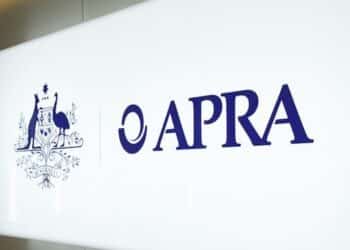The Treasurer has forecast a surplus of $9.3 billion for this financial year on the back of “responsible economic management”.
The surplus, although a reversal of the government’s previously forecast $1.1 billion deficit, will be wiped out by government spending on things deemed “unavoidable”, such as its Future Made in Australia Act, with the Treasurer predicting a period of larger-than-anticipated successive deficits will ensue.
“Pressures on the budget [will] intensify after that, rather than ease,” Chalmers said.
“We are expecting a deficit of $28.3 billion in 2024–25. But a stronger fiscal outcome in every year, compared to when we came to government.”
The government’s second successive surplus, after it announced a $22-billion surplus last year, has made room for cost-of-living relief and investments in the future, according to the Treasurer.
“The budget will ease cost-of-living pressures, not add to them, and incentivise investment in a Future Made in Australia,” Chalmers said.
He also revealed the government banked 96 per cent of revenue upgrades in the 2023–24 financial year, including through $77.4 billion in savings and reallocations of funds.
Chalmers noted a significant improvement of over $215 billion spanning the six years leading to FY2027–28, compared to the pre-election economic and fiscal outlook. Additionally, he said, the economy is poised to surpass forecasts outlined in the mid-year economic update.
Missed opportunities
Starting with missed opportunities, the Labor government did not include much sought-after measures that would have eased business processes for advisers considerably.
These include a fairer Australian Securities and Investments Commission (ASIC) funding levy, managed costs for the Compensation Scheme of Last Resort (CSLR), improved tax deductibility for financial advice, access to the Australian Taxation Office (ATO) portal for financial advisers, increased support for adviser education, relief in exam fees, and a reversal of proposed changes to reduced input tax credits for advice fees.
The budget did, however, contain several wins for small businesses, including another increase to the instant asset write-off threshold and a few items to help improve small business cash flow.
Cost relief for business
Other tax changes targeted particularly at encouraging businesses to invest were also announced on Tuesday.
One such tax includes $290 million to extend the government’s instant asset write-off scheme for small businesses for another year. This means businesses with a turnover of less than $10 million will be able to claim $20,000 from eligible assets.
The government has, however, been criticised because although this was also announced in last year’s budget, it has yet to be legislated.
In addition to the instant asset write-off, small and medium businesses switching to energy-efficient equipment or facilities can obtain additional (accelerated) depreciation deductions of 20 per cent.
Moreover, the government is providing $3.5 billion of energy bill relief, including rebates of $325 to around 1 million small businesses.
Cost of living relief
Changes to stage three tax cuts took centrestage on Tuesday evening despite being announced in January and legislated in February.
“From July 1, all 13.6 million taxpayers will get a tax cut,” Chalmers said.
“And for 84 per cent of taxpayers, and 90 per cent of women, a bigger tax cut than they would have under the previous government.”
Individuals earning under $150,000 will benefit most from the changes due to kick in on 1 July, but according to the government, “every Australian taxpayer will get a tax cut”.
Those earning $200,000 or more will receive a $4,529 cut, instead of the legislated $9,075 they were due to receive from 1 July.
Under the changes, the 19 per cent tax rate that applies to incomes between the $18,200 tax-free threshold and $45,000 will be lowered to 16 per cent.
Those earning between $45,000 and $135,000 will be taxed at 30 per cent, while the 37 per cent tax rate will be reinstated and apply to incomes between $135,000 and $190,000, after which, the 45 per cent rate will apply.
This means that someone on $73,000 will receive a tax cut over $1,500, more than double the amount under the previous plan, while somebody on $100,000 will have their tax cut increased from $1,375 to $2,179.
Alongside changes to stage three tax cuts, the government has announced measures such as energy bill relief.
Money laundering crackdown and tougher foreign investment framework
The government has announced it will provide $168.0 million over four years from 2024–25 to implement reforms to strengthen Australia’s Anti-Money Laundering and Counter-Terrorism Financing Act 2006, to enhance Australia’s ability to detect and disrupt illicit financing.
Funding includes:
- $160.8 million over two years from 2024–25 for the Australian Transaction Reports and Analysis Centre to expand its regulatory, intelligence, and data capabilities and provide guidance to newly regulated entities.
- $7.0 million over four years from 2024–25 for the Attorney-General’s Department to support the implementation of the legislative reforms through the provision of policy and legal advice and stakeholder consultation, and to deliver a program of anti-money laundering and counterterrorism financing capacity building in the Pacific.
The new obligations will require real estate agents, lawyers, and accountants to report dodgy transactions in a move that will bring Australia in line with the rest of the developed world.
The government is also strengthening Australia’s foreign investment framework by investing $15.7 million over four years from 2024–25 (and $4.1 million per year ongoing from 2028–29) for Treasury to strengthen and streamline Australia’s foreign investment framework, through more effective monitoring, enforcement of conditions, and timely review of foreign investment applications.
This includes refunding 75 per cent of fees for foreign investment applications that do not proceed because the applicant was unsuccessful in a competitive bid process.
Changes to super
Payday super plus paid parental leave
Starting from 1 July 2026, employers must pay superannuation at the same time they pay salary and wages to employees.
This change aims to give employees better visibility and control over their entitlements and helps the ATO recover unpaid superannuation.
The ATO will receive $40.2 million to improve their ability to match data and take action against cases of underpaid super.
Moreover, the Treasurer announced $1.1 billion for parents accessing the government-funded paid parental leave scheme will be paid superannuation in addition to their payments from next July.
Under Labor’s proposal, super will be paid at 12 per cent of the paid parental leave rate with about 180,000 families said to benefit on an annual basis.
Super recovery program
The government said it will recalibrate the Fair Entitlements Guarantee Recovery Program to pursue unpaid superannuation entitlements owed by employers in liquidation or bankruptcy from 1 July 2024.
This will achieve efficiencies of $13.0 million over four years from 2024–25 (and $29.9 million over the medium term) through an expected increase in tax receipts of $63.1 million over four years from 2024–25 (and $114.4 million over the medium term), with $44.4 million over four years from 2024–25 (and $96.9 million over the medium term) expected to be paid to superannuation funds
More money for ASIC
The government will provide $17.3 million over four years from 2024–25 (and $3.1 million per year ongoing) to promote the development of sustainable finance markets in Australia, including:
- $10.0 million over four years from 2024–25 (and $1.9 million per year ongoing) for additional resourcing for ASIC to investigate and take enforcement action against market participants engaging in greenwashing and other sustainability-related financial misconduct.
- $5.3 million over four years from 2024–25 (and $1.2 million per year ongoing) for the Treasury, ASIC, and the Australian Prudential Regulation Authority (APRA) to deliver the sustainable finance framework, including issuing green bonds, improving data, and engaging in the development of international regulatory regimes related to sustainable finance.
- $1.6 million over two years from 2024–25 for ASIC and the Treasury to consult on the design of a labelling regime to regulate the use of sustainability labels on retail investment products.
- $0.5 million in 2024–25 to continue the development of Australia’s sustainable finance taxonomy, including expanding the taxonomy to cover the agricultural sector.
The cost of this measure will be partially met from cost-recovery through ASIC and APRA industry levies.




Blah…….
An increase to the ASIC funding levy. So how much of that increase will be passed on to financial advisers.
An increase to the ASIC funding levy. WTF.